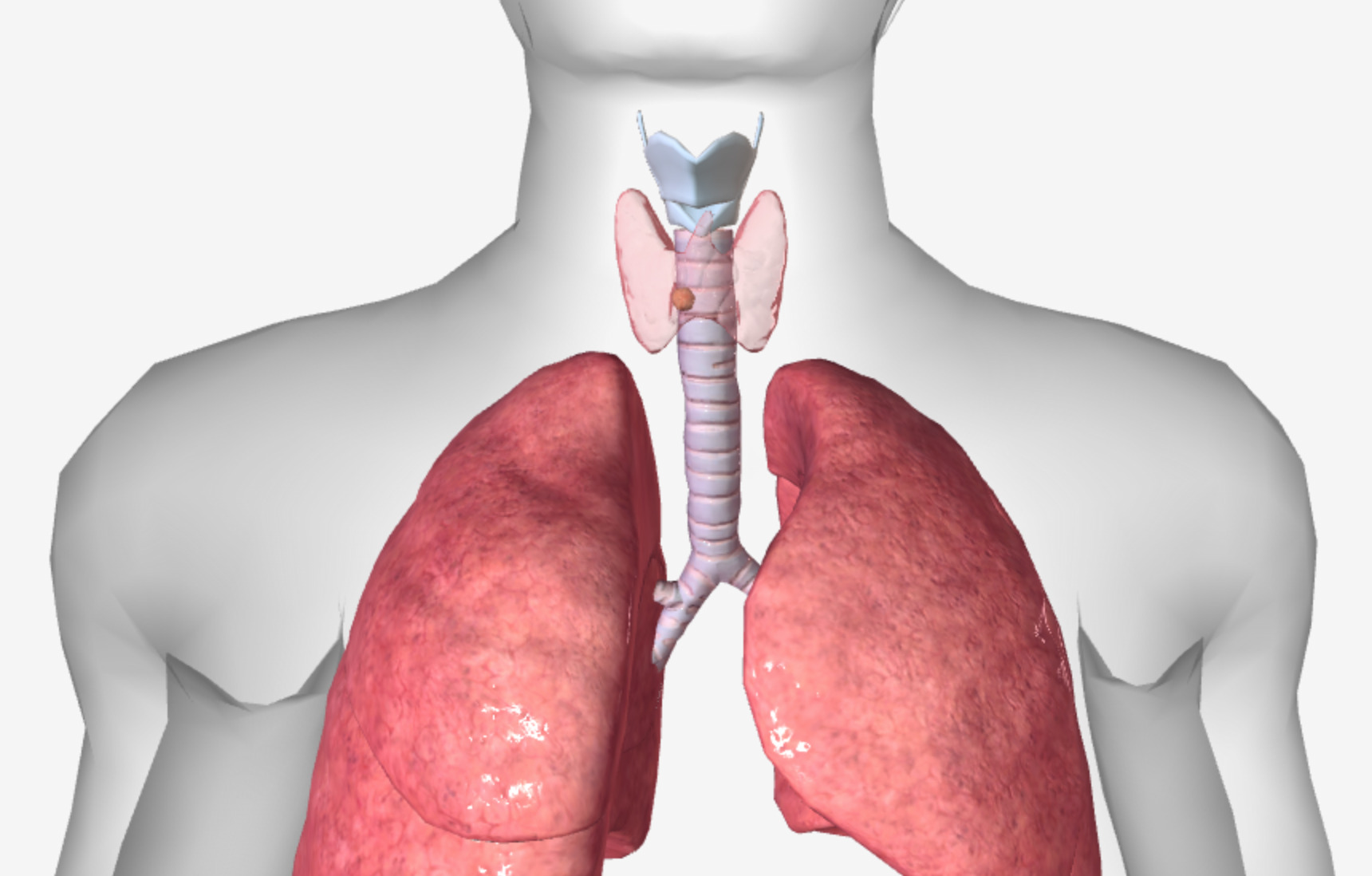Playlist
Show Playlist
Hide Playlist
Thyroid Cancer with Case
-
Slides Thyroid Disease.pdf
-
Download Lecture Overview
00:01 Let's go on to another case. 00:03 A 44 year old woman sees you in follow up for evaluation of a thyroid nodule. 00:08 2 weeks ago, you palpated a 2 cm lateral neck mass and a 2 cm left thyroid nodule. 00:15 She has a history of radiation therapy to the chest at the age of 17 for Hodgkin's lymphoma, but there is no family history of thyroid cancer. 00:24 Ultrasound of the thyroid is positive for a hypoechoic irregular margin thyroid nodule with associated left cervical adenopathy. 00:35 What is the most likely diagnosis in this patient? There are unfortunately some worrying signs here. 00:43 The 2cm lateral neck mass and the 2 cm left thyroid nodule are seen in the setting of prior neck irradiation. 00:51 She also has a prior history of lymphoma. 00:55 Ultrasound findings identified are hypoechoic nodule which means that it is dense. 01:01 With irregular margins and associated neck adenopathy, these are very worrisome signs that the nodule is more likely malignant. 01:10 The conclusion here is that the patient most likely has papillary carcinoma of the thyroid Radiation exposure at a young age is a very strong risk factor and fine needle aspiration of the nodule and the associated lymph node should be the next step in diagnosis. 01:27 Let's say a few words about thyroid cancer. 01:29 The incidence is rising faster than any other type of malignancy The incidence has more than doubled in fact in the last 30 years. 01:39 This increase is due solely to the increase in the numbers of identified papillary cancers. 01:46 With the highest rate of rise occuring in tumors measuring less than 2 cm Increased detection of otherwise occult tumors is the most likely cause of this given the increased rate of diagnostic imaging that is performed around the world currently. 02:02 The survival rate for thyroid cancers has remained stable or slightly improved with time. 02:08 Different types of thyroid cancers can be broken down into those that present most commonly to least commonly. 02:15 Strating with the most common causes, papillary thyroid cancer tends to affect the younger patients and is associated with prior radiation exposure particularly to the head and neck The papillary-follicular variant is another example of a fairly common thyroid cancer and then a purely follicular variant which tends to occur in older patients and rarely metastasizes to lymph nodes. 02:38 Less commonly are the medullary carcinomas of the thyroid also known as the parafollicular thyroid carcinomas. 02:46 1-2% of all thyroid tumors will be medullary cancers. 02:50 When you pick up a medullary cancer usually on pathology, always screen that patient for the RET protooncogene because this may be associated with multiple endocrine neoplasia (MET2A) type 2A. 03:03 Anaplastic thyroid cancers are also quite rare, the most aggressive form of thyroid cancer and they have 1 year survival rates that range between 20 and 30% Even less commonly are thyroid lymphomas, thyroid sarcomas or thyroid metastases. 03:21 Common causes of thyroid metastases include renal carcinomas, breast cancers, melanomas and colon cancers. 03:28 Let's talk a little bit about medullary thyroid cancer. 03:32 It accounts for by far less than 10% of all thyroid cancers. 03:36 Approximately 25% of medulllary thyroid cancers are hereditary So always screen for the RET protooncogene which will give you more information about the genetics of the tumor. 03:49 It also may be associated with several syndromes including multiple endocrine neoplasia. 03:54 MEN2A which may include pheochromocytoma and hyperparathyroidism and MEN 2B which is usually discovered by patients presenting with Marfanoid habitus, mucosal ganglioneuromas, as well as medullary thyroid cancer. 04:10 Familial medullary thyroid cancer can occur independently without being part of MEN type syndrome Biochemical screening for pheochromocytoma with measurement of plasma fractionated metanephrine levels should be done in all patients in whom RET mutations is found prior to them undergoing surgery for thyroidectomy. 04:32 The treatment of thyroid carcinomas usually requires surgery. 04:36 Some may also respond to radioactive iodine ablation Levothyroxine can be used to suppress thyroid stimulating hormone for patients with persistent disease or high risk of recurrence.
About the Lecture
The lecture Thyroid Cancer with Case by Michael Lazarus, MD is from the course Thyroid Disorders. It contains the following chapters:
- Case 1.4
- Thyroid Cancer
- Medullar Thyroid Cancer
- Treatment of Thyroid Cancer
Included Quiz Questions
What is the most aggressive form of thyroid cancer?
- Anaplastic
- Medullary (parafollicular)
- Papillary
- Follicular
- Papillary-follicular
After diagnosis of medullary (parafollicular) thyroid cancer, what is the best next step?
- Screen for RET proto-oncogene
- Contact family members about a genetic syndrome
- Screen for plasma fractionated metanephrines
- Perform CT of the abdomen and pelvis to evaluate for pheochromocytoma
- Prescribe levothyroxine
What is the most likely diagnosis in the patient described below? A 44-year-old woman has a follow-up evaluation of a thyroid nodule. Two weeks ago, you palpated a 2 cm lateral neck mass and a 2 cm left thyroid nodule. Medical history: radiation therapy to the chest at age 17 years for Hodgkin lymphoma. No family history of thyroid cancer. Imaging: results of thyroid ultrasonography are positive for a hypoechoic, irregular-margin thyroid nodule with associated left cervical adenopathy.
- Papillary carcinoma of the thyroid
- Thyroid cyst
- Toxic multinodular goiter
- Follicular adenoma
Customer reviews
5,0 of 5 stars
| 5 Stars |
|
1 |
| 4 Stars |
|
0 |
| 3 Stars |
|
0 |
| 2 Stars |
|
0 |
| 1 Star |
|
0 |
This lecture is very clear and simple. It is informative and well structured and the lecturer articulates well and is not boring at all. It is good because it highlights all the important facts to remember about thyroid cancer without going into too much details.




